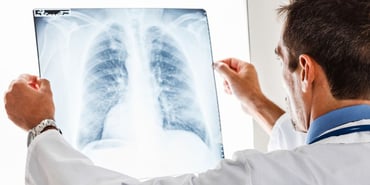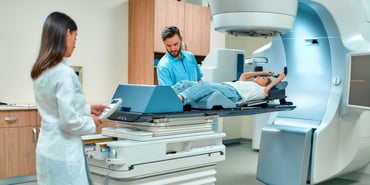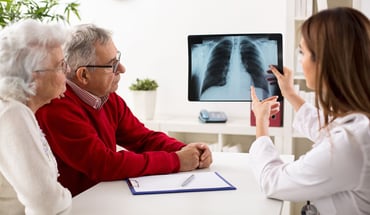
Lung cancer is the second-most common form in men and women. The American Cancer Society reports that disease accounts for 13% of all newly diagnosed cases, and their researchers made the following estimates for 2019 in the United States. There will be:
- More than 228,150 new lung cancer cases (116,440 men and 111,710 women).
- More than 142,670 (76,650 men and 66,020 women) will die of lung cancer.
- A spike lung cancer rates which will surpass breast cancer rate in women.
On August 1st, the international community will commemorate World Lung Cancer Day. This annual event helps raise awareness about this serious disease that impacts 7.6 million people annually. What better time than now to shed some light on lung cancer screenings?
What is a Lung Cancer Screening?
Screenings are routine tests that can help physicians search for diseases within the body. Lung cancers can spread to other organs before you have any symptoms; therefore, if you are at risk for lung cancer, these tests could help your doctor find the disease at an earlier, more treatable stage.
Your doctor may ask you to undergo a lung cancer screening if you're considered at-risk. Undergoing testing doesn't mean your physician believes you have lung cancer.
Three Types of Screenings for Lung Cancers
The National Cancer Institute researchers have studied three lung detection methods. These screenings find the disease at earlier stages and decrease patients' risk of dying of lung cancer. They include:
- Low-dose spiral CT scan (LDCT): This CT scanning technique uses low-dose radiation to take a series of detailed images. Three-dimensional images are made from a computer which is attached to x-ray equipment. It produces quality cross-section pictures that detect abnormalities in the lungs. This test uses 90% less ionizing radiation than conventional chest CT scans. The LDCT scan is the most preferred screening method for lung cancer.
The National Lung Screening Trial followed people (ages 55 to 74 years old) who smoked one pack of cigarettes every day for 30 years. Their researchers found that LDCT scans reduced patients' chances of dying of cancer because they found lung cancers at earlier stages than chest x-rays and sputum cytology. - Chest x-ray: These tests use energy beams to take an image of internal organs, and capture the image on film. During the test, a technician will take an x-ray of a patients lungs and bones to review for signs of lung cancer.
- Sputum cytology: During this test, doctors collect mucus (sputum) samples from patients lungs which are viewed under a microscope to check for cancer cells.
Who Should Be Screened for Lung Cancer?
Different risk factors can increase a patient’s chances of developing lung cancer. National Institutes of Health scientists have identified environmental factors and lifestyle choices that can elevate one’s risks for developing lung cancer. This research helps doctors determine which patients need lung cancer screening tests and how often they should get tested.
Lung cancer screenings have associated risks; therefore, the American Cancer Society recommends only people with a high-risk for developing lung cancer should receive annual lung cancer screenings. Patients are considered high-risk if they are aged 55 to 74 with a history of heavy smoking (comparable to smoking a pack a day) within the last 15 years.
There are risks associated with lung cancer screening methods; therefore, patients should be in fairly good health before they begin screening.
Risks Associated with Lung Cancer Screenings
As mentioned above, there are several risks associated with lung cancer screenings. Here are four issues you should be aware of before undergoing a test.
- Increased Radiation Exposure - Chest X-Rays and Low-Dose Spiral CT Scans can increase a patient’s cancer risk. Although they are beneficial, these screenings can also harm healthy tissue.
- False-positives and negatives - Some lung cancer screenings can give abnormal test results, even though cancer is not present. Doctors call these false-positive results. These tests may result in unnecessary anxiety, and follow-up tests or biopsies that present additional risks to patients.
Additionally, it is possible that cancerous tumors could be missed during a screening. Doctors call these false-negatives which results in delayed medical care, even if there are other lung cancer symptoms present.
- Over-diagnosis - Over-diagnosis can become a problem when a physician identifies a cancerous tumor that may have never caused issues, symptoms, or become life-threatening for a patient. The person may undergo unnecessary, invasive treatments that impact his/her quality of life.
Make the Decision
If you believe that you are a candidate for lung cancer screenings please talk with your doctor. Together you can decide if screening is the best option for you.
If you’ve been diagnosed with lung cancer, Compass Oncology has skilled cancer specialists that can help manage your cancer treatments. We have an outstanding team of physicians and supportive care providers that care about your wellness. You deserve the highest-quality health care.



